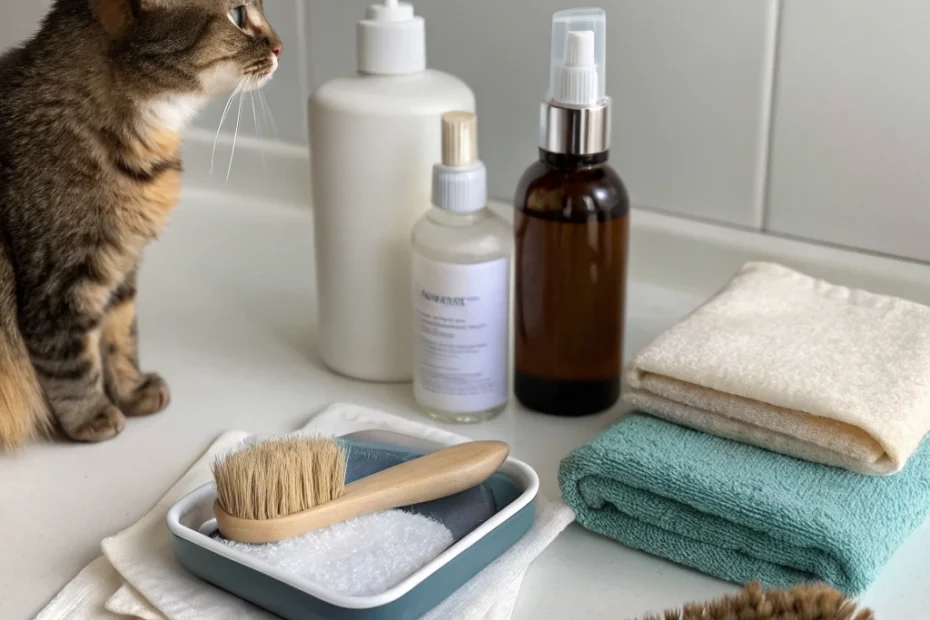At-a-Glance
Cat gravity feeders are a popular choice among pet owners looking for a convenient way to manage their feline’s feeding schedule. These devices use gravity to dispense dry food into a bowl as your cat eats, ensuring a continuous supply of food. They can be particularly useful for busy pet parents who may not always be home to refill food bowls. While gravity feeders offer convenience, it’s important to understand their features, benefits, and potential drawbacks to determine if they’re the right choice for your cat.
How to Choose
When selecting a cat gravity feeder, consider the following factors to ensure it meets your needs and those of your cat:
- Capacity: Choose a feeder with a capacity that matches your cat’s dietary needs and your schedule for refilling. Larger capacity feeders may be suitable for multiple cats or longer periods between refills.
- Material: Look for feeders made from durable, pet-safe materials. Stainless steel and BPA-free plastics are commonly used and easy to clean.
- Design: Consider the feeder’s design, including the size of the food opening and the stability of the base. A stable base can prevent spills and tipping.
- Ease of Cleaning: Opt for a feeder that is easy to disassemble and clean. Regular cleaning is essential to prevent mold and bacteria buildup.
Safety & Setup
Setting up a cat gravity feeder is generally straightforward, but safety should always be a priority. Here are some tips to ensure a safe setup:
- Read Instructions: Always read the manufacturer’s instructions before setting up the feeder to ensure proper use.
- Secure Placement: Place the feeder on a flat, stable surface to prevent tipping. Avoid placing it near areas where it could be knocked over by other pets or children.
- Monitor Food Levels: Regularly check the food levels to ensure your cat has a consistent supply and to prevent the feeder from becoming empty unexpectedly.
- Clean Regularly: Clean the feeder according to the manufacturer’s instructions to maintain hygiene and prevent contamination.
Core Pillars
The core pillars of using a cat gravity feeder effectively include convenience, consistency, and control. These pillars can support your cat’s feeding routine in the following ways:
- Convenience: Gravity feeders provide a hassle-free way to ensure your cat has access to food, even when you’re not at home.
- Consistency: By providing a steady supply of food, gravity feeders can help maintain a consistent feeding schedule, which may benefit your cat’s digestive health.
- Control: While gravity feeders offer convenience, it’s important to monitor your cat’s food intake to prevent overeating and maintain a healthy weight.
Placement & Environment Tips
The placement of your cat gravity feeder can influence its effectiveness and your cat’s comfort. Consider these tips for optimal placement:
- Quiet Area: Place the feeder in a quiet, low-traffic area where your cat feels comfortable eating.
- Away from Litter Box: Keep the feeder away from the litter box to maintain hygiene and prevent odors from affecting your cat’s appetite.
- Stable Surface: Ensure the feeder is on a stable surface to prevent spills and tipping.
- Accessible Location: Make sure the feeder is easily accessible to your cat, especially if you have a senior or mobility-impaired pet.
Comparison with Alternatives
While cat gravity feeders offer many benefits, it’s important to compare them with other feeding options to determine the best fit for your household:
- Automatic Feeders: Unlike gravity feeders, automatic feeders can be programmed to dispense specific portions at set times, offering more control over your cat’s diet.
- Manual Feeding: Feeding your cat manually allows for close monitoring of food intake and can help prevent overeating, but requires more time and effort.
- Interactive Feeders: These feeders encourage mental stimulation and slower eating, which can be beneficial for cats prone to rapid eating or boredom.
FAQs
Can gravity feeders be used for wet food? Gravity feeders are designed for dry food only. Wet food can spoil quickly and is not suitable for use in these devices.
How often should I clean my cat’s gravity feeder? It’s recommended to clean the feeder at least once a week, or more frequently if you notice any buildup or residue.
Are gravity feeders suitable for all cats? While many cats can benefit from gravity feeders, they may not be ideal for cats with specific dietary needs or those prone to overeating. Consult your veterinarian for personalized advice.
What to Do Next
If you’re considering a cat gravity feeder, take the time to evaluate your cat’s specific needs and your lifestyle. Consider the factors discussed in this guide to make an informed decision. Remember, while gravity feeders offer convenience, they should be used as part of a balanced approach to your cat’s nutrition and well-being. Always monitor your cat’s health and consult with your veterinarian if you have any concerns.
Disclaimer: Always consult your veterinarian for personalized advice regarding your cat’s health.
